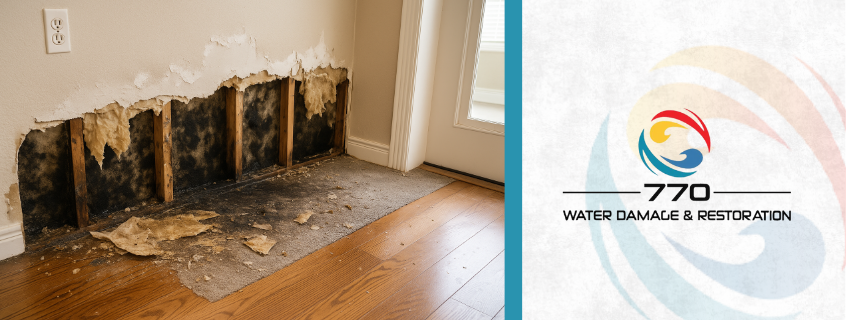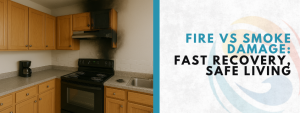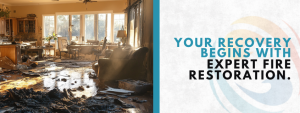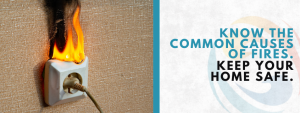
If you’re walking through your home and notice the trim around your doors or windows feels a little squishy, there’s a reason to pause. That soft feel under your fingertips isn’t normal—it’s your house sending you a warning. When your wood trim is turning soft, something bigger may be going on behind the walls. Ignoring it could lead to costly repairs, serious health risks, and damage that spreads further than you expect.
If you’re experiencing issues, remember that wood trim turning soft can escalate quickly.
Understanding why your wood trim turning soft is vital for home maintenance.
Let’s take a journey through the hidden dangers of soft wood trim and how to keep your home safe, dry, and looking its best.
Ignoring signs of wood trim turning soft may lead to bigger issues.
Be vigilant if you notice your wood trim turning soft; it’s a clear warning sign.
Water is often the cause when wood trim turning soft is present.
Check for signs that water intrusion is causing your wood trim turning soft.
The Unexpected Warning Sign: Why Is Your Wood Trim Turning Soft?
Soft trim doesn’t happen overnight. It’s often the result of hidden problems that build up slowly. One day, the trim looks fine. A few weeks later, it feels like foam. You may start to notice paint bubbling, edges pulling away from the wall, or cracks where the trim used to fit snugly. That’s how it starts.
What you’re seeing is moisture damage. Moisture gets into the wood, breaks down its fibers, and softens it from the inside out. That’s why your wood trim is turning soft, and once it starts, it won’t fix itself.
Water: The Silent Culprit Behind Softening Wood Trim
Water is sneaky. It doesn’t need a big flood to cause damage. It can seep through window cracks, leak from a slow-dripping pipe, or rise from under your floor. When your wood trim is turning soft, chances are water found its way in first.
Here are the common water sources that silently attack wood trim:
- Leaky windows or doors
- Plumbing issues behind walls
- Overflowing gutters
- Broken roof tiles
- Condensation from poor ventilation
Immediate action is required if your wood trim turning soft continues.
Be aware that wood trim turning soft can lead to mold growth.
Regular inspections help mitigate the risks of wood trim turning soft.
Once the water is there, the trim absorbs it like a sponge. You might not see it at first, but the wood knows. Slowly, it becomes soft, weak, and starts to fall apart.
From Moisture to Mold: The Escalating Risk
If moisture sits long enough in your trim, mold will follow. Mold doesn’t just look bad—it spreads spores into the air and causes respiratory issues, especially for kids or people with asthma. If your wood trim is turning soft, don’t wait for the mold to appear. It’s probably already growing where you can’t see.
Here’s what mold loves:
- Warm air
- Still water
- Wood or paper materials
- Darkness (like inside your walls)
Once mold takes root:
- It spreads through drywall, insulation, and even into the framing.
- It creates a musty smell that’s hard to remove.
- It eats through organic materials, making the damage worse.
Where Trouble Starts: Most Vulnerable Trim Locations
Soft trim doesn’t hit every part of the house equally. Some areas are more at risk than others. Recognizing these hot zones helps you stop problems before they grow.
High-risk trim locations:
- Bathroom baseboards: Frequent steam and water spills.
- Kitchen backsplashes and under-sink trim: Prone to hidden leaks.
- Window and door frames: Weather exposure and air leaks.
- Garage doorframes: Outdoor moisture + less insulation.
- Laundry room corners: Moist air from drying clothes.
Address the issue of wood trim turning soft before it escalates further.
These areas are where most homeowners first discover their wood trim turning soft. Start your inspections here and check monthly for early signs.
What Happens When Wood Trim Absorbs Moisture?
Moisture changes everything about wood. It expands, contracts, cracks, and eventually decays. The structure that once held up your wall can now crumble with just a little pressure.
Progression of Soft Wood Trim:
| Stage | Visual Clue | What’s Going On? |
| 1 | Bubbled paint | Moisture trapped inside |
| 2 | Warped edges | Wood is swelling |
| 3 | Spongy feel | Internal breakdown |
| 4 | Crumbling | Full rot of wood fibers |
| 5 | Mold spots or smell | Fungal colonization |
Each stage shows that your wood trim is turning soft from the inside out. Even if only Stage 1 is visible, there may be worse damage behind the surface.
Early Detection: Spotting the Signs of Soft Trim
Most people notice problems when they become obvious—but you can catch them earlier with a careful eye.
Common warning signs include:
- Trim that feels squishy when pressed
- Paint peeling or cracking on the surface
- Unusual gaps or raised sections
- Discoloration or dull gray marks
- Baseboards pulling away from the wall
Smells matter too. A musty odor near windows, doors, or corners is a strong sign that moisture is trapped, and the wood trim is turning soft even if it looks okay.
Be proactive if you suspect wood trim turning soft in your home.
Stop the Spread: Investigating the Source of Moisture
If soft trim is the symptom, hidden water is the cause. Fixing the trim won’t help unless the moisture is also stopped. That’s why identifying the source matters most.
Steps to locate moisture:
- Feel for cold spots on walls – May signal water behind drywall.
- Look above the trim – Discoloration may show roof leaks.
- Inspect plumbing nearby – Pipes inside walls may be dripping.
- Check gutters and downspouts – Overflowing water can back up into siding.
- Use a moisture meter – Simple tool, powerful results.
If the trim is soft, odds are the surrounding drywall is too. Digging deeper—literally—is often necessary to find the full extent of the damage. In many cases, your best option is to consult trained water damage professionals.
Don’t let wood trim turning soft go unchecked to avoid larger repairs.
Trim Repair or Replace? Knowing the Right Move
Can soft trim be fixed, or does it always need to be replaced? It depends on how far the damage has gone.
When replacement is necessary:
- Wood is crumbling or cracked
- Mold is growing inside or behind
- Moisture content is still high
- The same area has had repeat damage
Minor damage may be repaired if:
- Only the surface is affected
- No mold or odor is present
- Moisture source has been fixed
A professional inspection helps you decide. If you try to repair wood that’s still wet or infected, you’ll just see your wood trim turning soft again in a few months.
Consequences of Ignoring Soft Wood Trim
Identifying the source of moisture is crucial when wood trim turning soft.
Soft trim might seem small, but it’s often the tip of the iceberg. If left untreated, bigger and costlier problems follow.
What can happen if ignored:
- Mold spreads to furniture, carpets, and clothing
- Structural framing begins to rot
- Paint won’t stick, causing more cosmetic issues
- Bugs and termites are attracted to the soft wood
- Your home’s resale value drops
It’s easier (and cheaper) to deal with soft trim early on than to redo whole sections of your home later. In severe cases, families have to move out while mold is remediated.
How to Protect Your Home from Future Trim Damage
Keeping your home safe starts with simple habits and preventive steps. Here’s how to keep your trim dry and strong.
Tips to prevent soft wood trim:
- Seal all edges with waterproof caulk
- Repaint trim with moisture-resistant paint every 2–3 years
- Use dehumidifiers in damp areas like basements and bathrooms
- Install vent fans to reduce moisture buildup
- Inspect your roof and gutters twice a year
And if your area has been through floods or heavy storms, consider getting a water damage assessment even if nothing seems wrong yet.
Choosing the Right Trim Materials to Resist Moisture
Not all trim is created equal. Some woods absorb water quickly, while others resist it better. Choosing the right material helps prevent future damage.
Comparison of Popular Trim Materials:
| Material | Moisture Resistance | Durability | Best Use Areas |
| MDF | Very low | Poor | Dry, indoor spaces |
| Pine | Low | Medium | Bedrooms, hallways |
| Poplar | Medium | Good | Interior doors |
| PVC | Excellent | Excellent | Bathrooms, kitchens |
| Oak | Medium-high | High | Living rooms |
If your wood trim is turning soft, switching to PVC in high-moisture areas can stop the cycle.
Can Soft Wood Trim Be Saved? Or Is It Time to Replace It?
Many homeowners want to avoid the hassle of full replacement—but sometimes, that’s the smarter move. Let’s break it down.
You can try to save it if:
- Only a small area is affected
- You caught the issue early
- There’s no mold or water source nearby
You should replace it if:
- Trim feels spongy along a large section
- The damage returned after past repairs
- Water is still present behind the wall
Trying to save badly damaged trim only delays the problem—and usually ends up costing more later.
When to Call in the Experts Before It’s Too Late
Recognize that wood trim turning soft can compromise your home’s safety.
You don’t have to do it alone. Water damage and trim restoration is complex and often hidden from plain view. That’s why it pays to let experienced professionals check the situation.
Understanding the causes of wood trim turning soft is essential for homeowners.
They’ll use advanced moisture tools, infrared cameras, and drying machines to find and fix what you can’t see. Professionals can also remove mold safely—without spreading spores.
If your wood trim is turning soft, and you’re unsure why or how deep the problem goes, don’t take risks. Get help before more damage spreads through your home.
Moisture Comes in Many Forms: Beyond Just Leaks
While plumbing and rain are common causes, other moisture sources are just as dangerous.
Unexpected moisture triggers:
- Air conditioning condensation
- High indoor humidity in summer
- Leaky vents in the attic
- Overflowing planters or indoor fountains
- Fish tanks near wood surfaces
The takeaway? Water is everywhere. Managing indoor moisture is a 24/7 job.
Final Takeaway: Soft Wood Trim Isn’t Just Cosmetic—It’s a Warning
When your wood trim is turning soft, don’t ignore it. It may look like a minor issue, but it’s often the first sign of something worse—hidden leaks, trapped moisture, structural decay, or mold growth. Take it seriously.
Awareness of wood trim turning soft can save you time and money.
Touch your trim. Check your paint. Smell your walls. And act quickly when anything feels off. Because once your trim goes soft, it’s not just your walls that are at risk—it’s your whole home.
Frequently Asked Questions: Soft Wood Trim Issues & Solutions
Why is my wood trim turning soft even though I don’t see any water leaks?
Soft trim can result from hidden moisture caused by high humidity, poor ventilation, or slow plumbing leaks inside walls. Even small amounts of moisture over time can weaken wood fibers without visible water damage.
Can I fix soft wood trim myself, or do I need professional help?
You can replace minor soft trim areas if the moisture source is gone and there’s no mold. For widespread damage or hidden issues, it’s best to call a professional for a thorough inspection.
How do I know if the soft wood trim has mold behind it?
Look for musty odors, black or green spots, and areas that stay damp even after drying. If you notice these signs, there’s a good chance mold is present behind the trim.
What’s the best material to use when replacing wood trim in wet areas?
PVC trim is the best choice for moisture-prone spaces like bathrooms and kitchens. It’s water-resistant, mold-resistant, and lasts much longer than regular wood.
How can I prevent my wood trim from turning soft in the future?
Seal all joints, control indoor humidity with fans or dehumidifiers, and inspect your home regularly for leaks or condensation. Keeping moisture away is the key to long-lasting trim.
Seek help if your wood trim turning soft becomes a persistent issue.
Ignoring wood trim turning soft can lead to major repairs and costs.
Evaluate your wood trim turning soft situation and take action immediately.
Each case of wood trim turning soft may require different approaches for repair.
Consulting experts can help with wood trim turning soft before it causes more damage.






